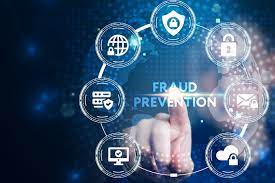The Role of Machine Learning in Enhancing Fraud Detection
Machine learning plays a pivotal role in enhancing fraud detection by providing the capability to analyze vast amounts of data, identify patterns, and detect anomalies associated with fraudulent activities. Here are key ways in which machine learning contributes to improving fraud detection:
- Data Analysis and Pattern Recognition:
- Anomaly Detection: Machine learning models, such as isolation forests, one-class SVMs, and autoencoders, can identify anomalies in data by learning what constitutes normal behavior and flagging deviations from it. This is particularly useful for detecting previously unknown fraud patterns using device fingerprint javascript.
- Pattern Recognition: Supervised machine learning models can learn from historical data to recognize patterns associated with fraudulent transactions or activities. As new data arrives, the models can continuously adapt to evolving fraud tactics.

- Real-Time Monitoring:
- Continuous Assessment: Machine learning models can assess the risk associated with each transaction or user activity in real-time. This enables immediate response to suspicious behavior as it occurs.
- Scoring Systems: Machine learning can assign risk scores to transactions based on various factors, such as transaction amount, location, and user behavior. Higher scores indicate a higher likelihood of fraud, triggering further investigation.
- User and Entity Behavior Analytics (UEBA):
- Behavioral Profiling: Machine learning algorithms can create profiles of normal user behavior by analyzing historical data. Deviations from these profiles can trigger alerts, helping to identify account takeovers or insider threats.
- Session Analysis: Machine learning models can analyze user sessions to detect anomalies, such as rapid changes in behavior, unusual login times, or multiple login attempts.
- Adaptive Models:
- Model Training and Updating: Machine learning models can be continuously trained and updated with new data, allowing them to adapt to changing fraud patterns. This adaptability is essential for staying ahead of evolving threats.
- Feedback Loops: Analysts and investigators can provide feedback on model performance, helping to refine and improve the accuracy of fraud detection algorithms.
- Improved Accuracy and Reduced False Positives:
- Feature Engineering: Machine learning allows for the creation of advanced features from raw data, increasing the accuracy of fraud detection models.
- Reduced False Positives: By considering a wide range of variables and patterns, machine learning models can reduce the number of false positives, ensuring that legitimate transactions are not mistakenly flagged as fraudulent.
- Detection of Complex Fraud Schemes:
- Network Analysis: Machine learning can analyze the relationships between entities, such as users, devices, and transactions, to uncover complex fraud networks or collusion.
- Scale and Efficiency:
- Handling Big Data: Machine learning can handle and process large volumes of data efficiently, making it suitable for organizations with extensive transaction data.
- Unsupervised Learning for Emerging Threats:
- Identifying Unknown Threats: Unsupervised machine learning techniques can detect previously unknown fraud patterns or novel attack methods by identifying anomalies in data without relying on predefined rules.
- Integration with Other Technologies:
- Biometrics: Machine learning can be integrated with biometric authentication methods (e.g., facial recognition or fingerprint scanning) to enhance user identity verification.
- Risk-Based Authentication:
- Adaptive Authentication: Machine learning can dynamically adjust authentication requirements based on the perceived risk of a transaction or user activity, providing a seamless and secure user experience.
In summary, machine learning empowers organizations to build sophisticated fraud detection systems that are adaptive, efficient, and highly accurate. These systems not only help prevent financial losses but also protect the reputation and trust of businesses and their customers in an increasingly digital and interconnected world.

Leave a Reply